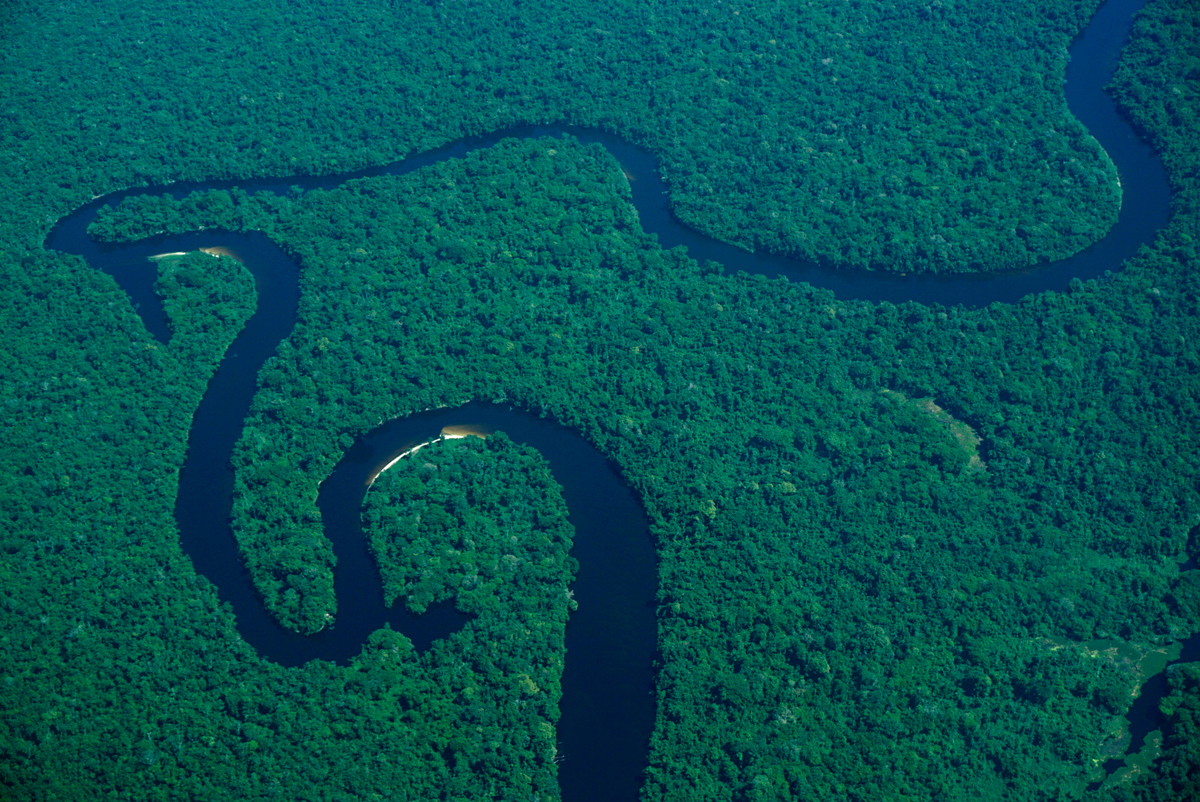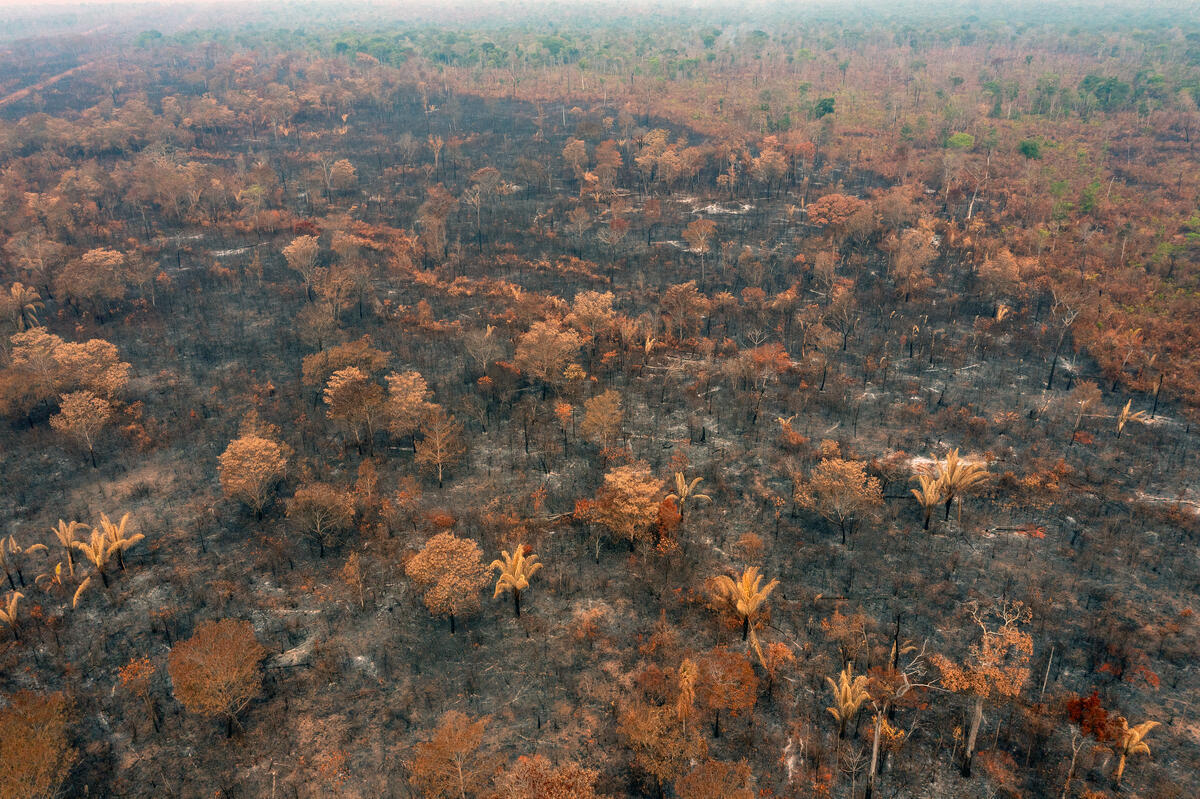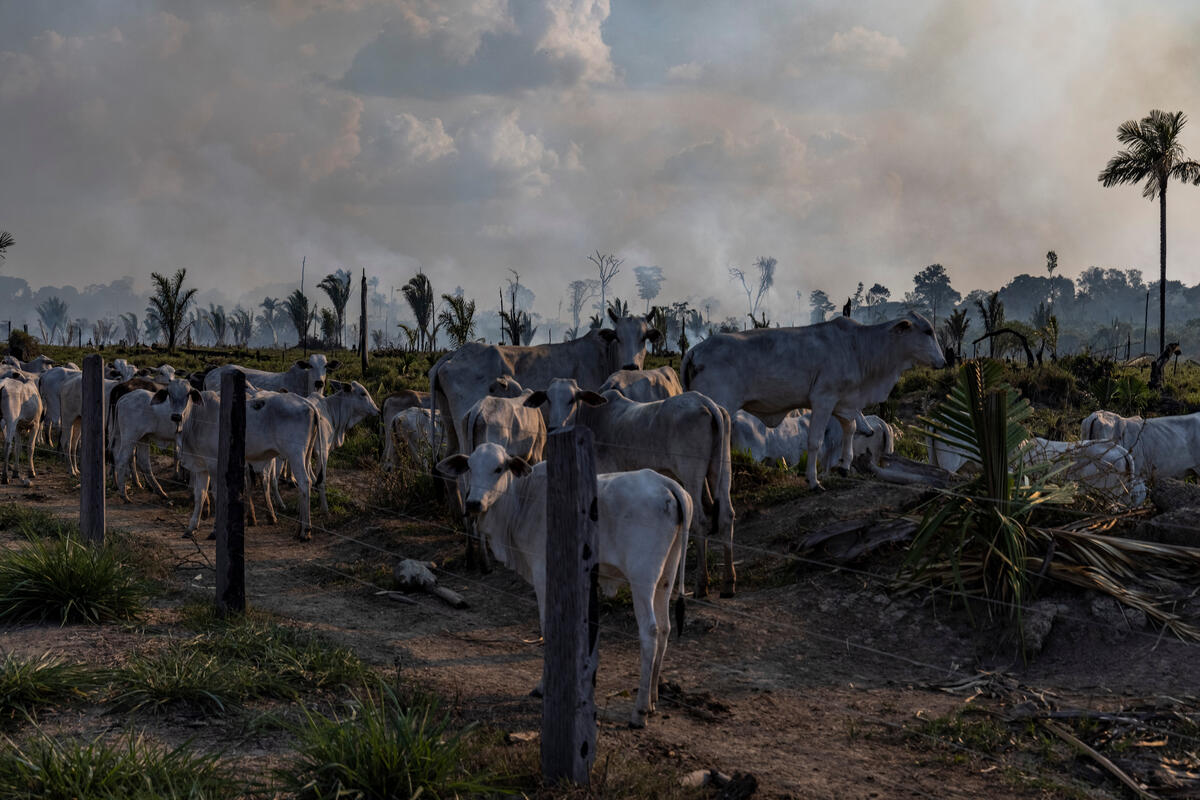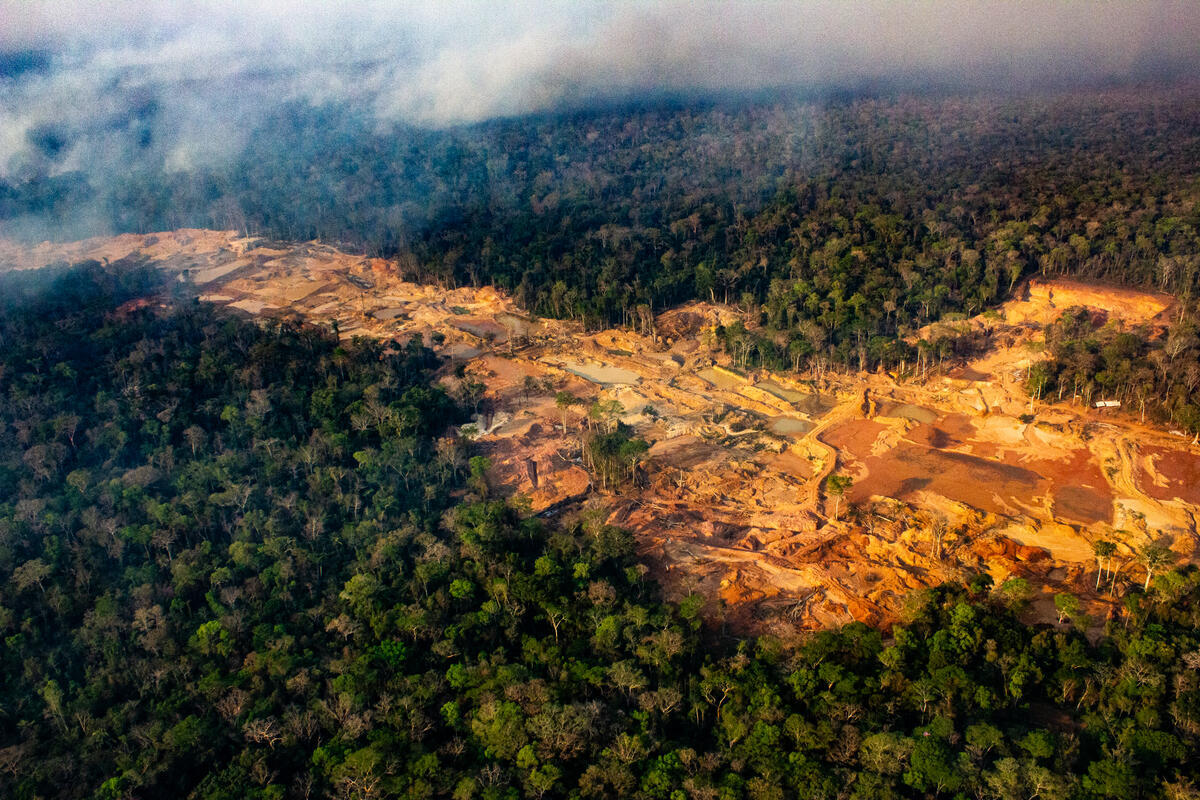With Donald Trump, a notorious climate change sceptic, poised to enter the White House for a second term, the climate world – from officials to campaigners and business executives – is bracing for the impact of his presidency.
Trump, a Republican business mogul who has called climate change a “scam”, has made no secret about his intentions. From plans to withdraw the US from the Paris Agreement once more, to attacks on the scientific research underpinning our knowledge of global warming and the roll-back of key emission-cutting regulations, the incoming administration could mark a major setback for climate action.
Experts believe one of Trump’s first moves after being sworn in on January 20 could be to pull the US out of the landmark global climate agreement. If he takes that step – something he did last time around – the US would join just three other countries outside the Paris Agreement: Iran, Libya and Yemen.
Legal experts say Trump could quit Paris pact – but leaving UNFCCC much harder
The process to leave would take a year from the time Trump triggers it, meaning that the US will still be part of the Paris Agreement when the COP30 climate talks take place in Brazil in November.
Trump’s team is also reportedly mulling a more audacious attempt to pull the US out of the UN Framework Convention on Climate Change (UNFCCC), the instrument underpinning global climate action, for the first time. While leaving the Paris pact would be legally straightforward, experts are divided on whether Trump could withdraw the US from the UNFCCC without Senate approval and – if he did – how easy it would be for a future president to re-join.
Frances Colón, lead for international climate policy at the Center for American Progress, told journalists this week that Washington’s role at COP30 is “not clear”. “Diplomats will do their best, but they’ll have to see whether the White House will be interested at all in engaging in COP talks, and this is still an open question,” she said.
Leaving the Paris pact would mean the US would no longer have to report on its greenhouse gas emissions each year and would have weaker legal responsibilities to provide climate finance for developing countries to adopt clean energy and adapt to a warming world.
Developing-world climate dollars at risk
Joe Thwaites, senior advocate for international climate finance with the US-based Natural Resources Defense Council, said Trump’s administration is expected to try to cut back on international climate finance provision everywhere it can – but that doesn’t mean funding will fall to zero.
Early in his first term in 2017, when Trump announced that the US would leave the Paris Agreement, he launched a blistering attack on the UN’s Green Climate Fund (GCF) – which was littered with inaccuracies – and refused to deliver any more of a $3-billion pledge to the fund made by his predecessor, Barack Obama.
Super-rich have already burned more than their fair share of carbon for 2025
The US seems unlikely to stump up the $4 billion it now owes to the GCF under Trump, after the Biden administration made another large promise. But some international climate finance may be forthcoming if Congress continues approving money for organisations like the US Agency for International Development and the Global Environment Facility which back climate projects overseas.
“It’s not just about what Trump wants – and last time around, we saw that a lot… he didn’t get his way,” Thwaites said.
Trump-proofing climate finance
International climate finance allocations added up to about $600 million a year when Trump was previously in office. That’s a far cry from the roughly $11 billion a year provided by the end of Biden’s government, but advocates again plan to push hard to ensure the taps are not turned off.
Thwaites said international climate finance “is a vital investment”, adding “there’s still a strong case – including just a very self-interested case for why the US would want to carry on providing this kind of finance” – and geopolitically important partners such as small island developing states are likely to keep on asking for it as a priority.
In addition, the world is now better prepared for a climate-sceptic US president, he noted, compared with the shock in 2016. “People have priced in Trump’s impact,” Thwaites said.
This was reflected at the COP29 climate summit in Baku, he said, where the deal on a new finance goal to channel money to developing countries reflected the likelihood of Washington not playing ball for the next four years in terms of its size and composition.
For example, the decision to allow all finance coming via multilateral banks to be counted towards the goal to provide government finance of $300 billion a year by 2035 means that contributions made by the US can be included in the total, even if it pulls out of the Paris pact. Wealthier emerging economies like China are also encouraged to make voluntary contributions, which could help make up any shortfall due to the US.
Uncertain future for EXIM
One US provider of finance to clean energy overseas, however, could be severely affected under Trump.
According to Kate DeAngelis, deputy director for international finance at Friends of the Earth, Trump will be under pressure from some Republicans in Congress not to renew authorisation for the EXIM (Export-Import) Bank when its current mandate runs out in 2026.
This would effectively shut down the organisation. EXIM is a semi-independent agency and has backed both fossil fuel and renewable energy deployment abroad under both the previous Trump and Biden administrations.
Bid to end export credit help for oil and gas fails, with Korea and Türkiye opposed
It is now considering support for about a dozen projects mining for minerals like lithium, which are needed for the energy transition. DeAngelis said this support is now in greater doubt because of the change in the presidency, although she suspects the bank would still back them.
Under Biden, the bank continued to support fossil fuel projects in countries like Bahrain, and that is very unlikely to change under Trump, she added.
Climate regulation bonfire
Fossil fuels are also expected to get a boost on the domestic front. Under his refrain of “drill, baby, drill”, the president-elect has promised to increase oil and gas extraction in the US, while rolling back many of the landmark climate regulations introduced by the Biden administration aimed at slashing emissions.
Hannah Kolus, a senior analyst with Rhodium Group’s energy and climate practice, said it looks “very likely that Trump will pursue an aggressively deregulatory agenda” judging by his first stint in office and recent statements from the incoming administration.
“Rolling back regulations would be a lengthy process, so it’s not going to happen on day one,” added Kolus, “but certainly by the end of his term, he could remove many of the key climate regulations enacted over the past four years.”

WA Parish Generating Station, a natural gas and coal power plant, in Fort Bend County near Houston, Texas on June 25, 2023. (Photo by Reginald Mathalone/NurPhoto)
The Environmental Protection Agency’s greenhouse gas (GHG) standards for power plants could be first on the chopping block. Announced less than a year ago, the rules require existing coal-fired power plants that plan to operate beyond 2039 and large new gas-fired power stations to cut 90% of their GHG emissions by 2032. Trump vowed to revoke those regulations on the election campaign trail last August when he described them as an “anti-American energy crusade”.
Another set of rules aimed at “sharply” reducing methane emissions from oil and gas operations risk a similar fate, along with a new levy meant to punish those not complying with the measures. Fossil-fuel lobby groups have repeatedly called on the incoming administration to cancel the methane regulations.
To reform climate COPs, we should start with the voting rules
More stringent emissions standards for passenger cars and small trucks – announced in March 2024 – may also be targeted.
Rachel Cleetus, policy director with the climate and energy programme at the Union of Concerned Scientists (UCS), said it is “very clear” the broader intention is to boost the fossil fuel sector. The rhetoric of many nominees for key positions in the incoming administration is about “delivering for the fossil fuel industry, promoting their profits, their narrow interest over the public interest,” she told Climate Home.
Reprieve for IRA measures?
While reversing specific regulations might be an easy win for Trump, the future of the mammoth clean energy incentives enacted through the Inflation Reduction Act (IRA) remains less clear.
Trump has repeatedly taken aim at tax credits for electric vehicles and renewable energy, labelling them wasteful spending. Reuters reported last November that his transition team was working on plans to kill off the subsidies.
But experts think it won’t be easy for the Trump administration to dismantle the IRA. Congress holds the power to modify tax credits and, although it is now Republican-controlled, Trump could struggle to convince enough lawmakers to push through its agenda.
Rhodium Group’s Kolus said that’s because Republican districts have benefited the most from IRA subsidies so far – and there’s a history of bipartisan support for many of those. “It seems unlikely that Congress is going to repeal all of the energy tax credits,” she added.
Leading Republican House Speaker Mike Johnson suggested that “a scalpel and not a sledgehammer” should be used for making changes. Whichever tool Trump ends up wielding, the question is what that would do to the emissions-cutting targets spelled out in the US’s updated Nationally Determined Contribution (NDC) under the Paris Agreement unveiled last December.
The Biden administration insisted that the US could reach the goal of cutting greenhouse gas emissions by 61-66% below 2005 levels by 2035, even if Trump rolls back climate policy. But others are more sceptical. Even if the IRA was left untouched, undoing regulations on fossil fuel standards alone would put the US on a less ambitious path to reduce emissions by 31-51% by 2035, according to modelling by Rhodium Group.
Climate science under threat
Climate science is another domain where experts fear the incoming administration will go on the offensive. Trump has a lengthy track record of amplifying disinformation while denigrating legitimate climate research.
Cleetus of UCS told Climate Home “a very somber mood” pervades the scientific community as it braces for the start of an administration that, she said, “holds a deeply anti-scientific view”.
Cleetus expects the Trump team will try and “take a wrecking ball” to federal agencies at the forefront of climate research. That would include the Environment Protection Agency and the National Oceanic and Atmospheric Administration (NOAA), which plays a crucial role in monitoring global temperatures and devising climate models.
Record-hot 2024 shows world must adapt to extremes, says EU climate service
“It is a real problem,” said Cleetus, “because these career scientists are doing the kind of bedrock science that helps inform good policies that we can take to both prevent climate change and protect against its impacts.”
And the consequences of a potential Trump attack on climate science would reach far beyond the American borders. The US government is one of the world’s largest supporters of climate science and its federal agencies provide key instruments, such as satellites, that facilitate the understanding of global warming, its causes and impacts across the globe.
Despite the gathering storm clouds, Cleetus said “we should not concede that this destruction will be complete”.
“Just because all of these political signals are aligned one way, it does not mean that we live in a dictatorship,” she added. “The United States is still a democracy. There are public interests that will come forward in different kinds of ways.”
(Reporting by Matteo Civillini; additional reporting by Joe Lo and Megan Rowling; editing by Megan Rowling)
The post What Trump’s second term means for climate action in the US and beyond appeared first on Climate Home News.
What Trump’s second term means for climate action in the US and beyond
Climate Change
Bolivia’s shift to the right renews ambition to mine vast lithium reserves
Bolivia’s election of centre-right President-elect Rodrigo Paz Pereira could see the country open its vast lithium resources to foreign investors to bolster its faltering economy – a move that could benefit the US after years of hostility toward Washington, analysts say.
Paz, a senator and the son of a former president, won the country’s election earlier this month, ending two decades of left-wing rule, which constrained foreign investment in the South American nation’s mineral wealth.
The change in government may be welcomed by investors in the US, which is seeking to secure access to minerals that are critical for clean technology and military equipment, to counter China’s supply chain dominance, and has previously raised concerns over Chinese investments in the region’s lithium industry.
Lithium is a key material to manufacture rechargeable batteries for electric vehicles and energy storage.
Bolivia makes up less than 1% of global lithium production despite possessing some of the world’s largest reserves, with an estimated 23 million tonnes, or 20% of the global total.
Paz has pledged to seek overseas partnerships to tap these reserves. But he will have to balance engaging the US with maintaining investment from China and Russia initiated by his predecessors.
“Exactly what he does on this issue will determine his relationship with China and Russia,” said Farit Rojas, a professor at the Higher University of San Andrés in La Paz.
At the same time, the political reset could provide Bolivia with a critical opportunity to set clearer and stricter environmental and social standards for developing its burgeoning lithium sector, analysts told Climate Home News.
Bolivia’s lithium dream
Paz’s election comes at a pivotal moment for the country. It is mired in an economic crisis spurred by runaway inflation caused by a foreign currency shortage, leaving people waiting in long lines for fuel and essentials like cooking oil.
Converting lithium reserves into a profitable export industry would bring much needed dollars into the country.
But doing so would require amending Bolivia’s constitution to allow private firms to extract the mineral. That privilege was restricted to Bolivia’s state-owned companies under the 20-year rule of the Movement for Socialism (MAS), the party formerly led by ex-President Evo Morales.
Constitutional restrictions and past rejection of foreign investment mean Bolivia’s lithium resources remain largely untapped compared to neighbouring Argentina and Chile, whose deposits are of higher quality.
A significant share of Bolivia’s deposits also lie beneath the Salar de Uyuni salt flats, a major tourist attraction.
Paz, whose party does not have a legislative majority, has yet to say whether and how he will amend Bolivia’s constitution. But he has pledged not to “sell out” Salar de Uyuni.
US, China and Russia: a balancing act
His first months in office will be watched closely by the Trump administration. Following Paz’s election victory, the US Department of State pledged to work with him on “shared goals of regional and global security, economic prosperity, and growth that will benefit our nations”.
For the US, this could be an opportunity to break China and Russia’s grip on Bolivia’s lithium reserves, said Pablo Hamilton, a Chilean mining lawyer connecting foreign investors with energy opportunities in Bolivia.
In 2024, Bolivia’s state-owned Yacimientos de Litio Bolivianos lithium company signed contracts worth a combined $2 billion with Chinese and Russian firms to extract lithium beneath the Salar de Uyuni salt flats. The year prior, it signed a $1.4 billion deal with Chinese battery manufacturing giant CATL to develop its lithium resources.
AI and satellite data help researchers map world’s transition minerals rush
But those contracts – which have yet to be approved by Bolivia’s legislature – have been sharply criticised by scientists, Indigenous peoples and local communities because of a lack of transparency over the consultation process, inconsistencies within the contracts and environmental risks. Paz has pledged to review the contracts.
Cancelling the contracts could cause investors to worry about policy volatility, Hamilton told Climate Home News. But the administration could justify doing so if it can prove allegations of corruption that have swirled around the deals. It could also provide an opportunity to establish stricter mining standards that provide certainty to potential investors.
Investors “don’t know what to expect”
“The rules are not clear enough. It’s very concerning that investors don’t know what to expect,” Hamilton said. “This is a great opportunity to [mandate] a free, prior and informed consultation process and environmental impact assessments – really professional ones, not just to tick the box.”
To attract foreign investment, Paz will likely seek to build public-private partnerships, which will require greater engagement from local actors than in the past, Hamilton said.
In the area surrounding Salar de Uyuni, Indigenous groups have lost trust in the government, citing the shadowy allocation of mining contracts and saying their communities have not benefited from mining.
They also worry that additional extraction would deplete the limited freshwater resources they rely on for farming, said Gonzalo Mondaca of environmental organisation Cedib, which works with communities living in the lithium-rich region.
Efforts to green lithium extraction face scrutiny over water use
The proposed Chinese and Russian extraction plans would use direct lithium extraction (DLE), a group of technologies that proponents say can help extract more lithium with fewer environmental impacts but which still uses large amounts of water.
But existing environmental assessments are not sufficient to understand the impact of the technique on the salt flat’s ecosystem, said Mondaca.
On the campaign trail, Paz also said he would seek to export the magnesium byproducts of lithium extraction to the US and China.
However, that plan requires a high level of technological development and Bolivia currently lacks the necessary infrastructure, said Mondaca.
Even if the new president manages to clear constitutional hurdles to liberalise the country’s lithium sector, “there is still a long way to go,” he added.
The post Bolivia’s shift to the right renews ambition to mine vast lithium reserves appeared first on Climate Home News.
Bolivia’s shift to the right renews ambition to mine vast lithium reserves
Climate Change
10 reasons why we need to act for the Amazon
The Amazon isn’t just the world’s greatest rainforest. She has been home to her original people for tens of thousands of years, who have persisted through centuries of colonial incursions to protect their home. At each moment of each day, the Amazon breathes, dances, and sings with an endless variety of plants and animals, many of those we humans have yet to understand. The Amazon is life-giving, irreplaceable and yet profoundly vulnerable.
Here are 10 fascinating facts to inspire you to take action for the Amazon:

1- The Amazon is the largest rainforest in the world
Spanning over nine countries in South America, the Amazon is the largest tropical forest on the planet, covering 6.7 million square kilometres. To put it in perspective, she is twice the size of India—the largest country in South Asia. The biggest part, around 60%, is in Brazil. After the Amazon, the Congo Basin and Papua host the world’s largest remaining rainforests.
2- The Amazon is one of the most biodiverse ecosystems on Earth
The Amazon is home to approximately 10% of all known species of fauna and flora worldwide. From the beautiful hyacinth macaws to fearless jaguars and the amazing pink dolphins, this vibrant ecosystem is teeming with life. In some areas, a single hectare can contain more than 300 tree species, approximately two-thirds of the native tree species in Europe (454), making the Amazon one of the most botanically rich regions on Earth.
Studies show that the Amazon Basin harbours at least 2,716 species of fish, 427 amphibians, 371 reptiles, 1,300 birds, and 425 mammals. However, the vast majority of its biodiversity lies in her invertebrates, particularly insects, with over 2.5 million species currently known

3- There are approximately 3 million Indigenous People living in the Amazon
The Amazon is home to a diverse group of Indigenous Peoples. Over 390 Indigenous Peoples live in the region, along with approximately 137 isolated groups, who have chosen to remain uncontacted.
In Brazil, about 51.2% of the country’s Indigenous population resides in the Amazon. But the largest tropical forest in the world is also home to traditional communities that have lived in harmony with the forest for generations, such as Rubber Tappers, Ribeirinhos—who inhabit the Amazon’s riverbanks—and Quilombolas, Afro-Brazilian communities descended from enslaved people..
4- The Amazon is home to over 40 million people
The Amazon is not just a vast rainforest rich in biodiversity and home to Indigenous People—it is also home to several cities. In Brazil, These include Manaus , an industrial hub with a population of 2.2 million, and Belém , which will host the United Nations Climate Conference (COP30) in November 2025.
These people’s lives are intrinsically connected to the forest. They depend on her for their food, fresh water, and to regulate the local climate. Smoke from the fires in the Amazon directly impacts the people living in the region, darkening the skies and causing respiratory problems to the population, especially children and elders.

5- The Amazon is vital for the global climate
The Amazon is estimated to store about 123 billion tons of carbon, both above and below ground, making her one of Earth’s most crucial “carbon reserves”, vital in the fight against the climate crisis. However, studies show that fire- and deforestation-affected areas of the Amazon are now releasing more CO₂ into the atmosphere than they absorb. This poses a major threat to the global climate. Protecting the Amazon means protecting the future of everyone.
6- Fires in the Amazon are not natural
Unlike bushfires in Australia and other parts of the world, fires in the Amazon are not natural. In the Amazon biome, fire is used in the deforestation process to clear the land for agriculture and pasture. The use of fire in the Amazon is often illegal, and so is deforestation. This practice has a major impact on the local biodiversity, the health of the populations living in the region, and to the global climate, as the fires release vast amounts of carbon into the atmosphere.

© Victor Moriyama / Amazônia em Chamas
7- Cattle ranching is the leading cause of deforestation in the Amazon
The expansion of agribusiness in the Amazon is putting more and more pressure on the forest. According to a study, 90% of the deforested areas in the Brazilian Amazon are turned into pasture to produce meat and dairy. This means the food we eat may be linked to deforestation in the Amazon. We must urge our governments to stop buying from forest destroyers and ensure supply chains are free from deforestation, and demand stronger protections for the Amazon.
8- Illegal gold mining is a major threat to Indigenous Peoples
Illegal gold mining in Indigenous Lands in Brazil surged by 265% in just five years, between 2018 and 2022. The activity poses a severe threat to the health and the lives of Indigenous People, destroying rivers, contaminating communities with mercury and bringing violence and death to their territories.
But illegal gold mining doesn’t impact just the forest and Indigenous People. A recent study showed that mercury-contaminated fish are being sold in markets in major Amazonian cities, putting the health of millions at risk.

9- The Amazon is close to a point of no return
About 17% of the Amazon has already been deforested, and scientists warn we are getting dangerously close to a ‘point of no return’.
According to a study, if we lose between 20% and 25% of the Amazon, the forest might lose its ability to generate its own moisture, leading to reduced rainfall, higher temperatures, and a self-reinforcing cycle of drying and degradation.
As a result, vast areas of the forest could turn into a drier, savanna-like ecosystem, unable to sustain her rich biodiversity. This could have catastrophic consequences for the global climate, local communities, and the planet’s ecological balance.
10- The most important Climate Conference in the world is happening in the Amazon this year
COP30, the United Nations Climate Conference, will take place in Belém, the second largest city in the Amazon region, in November 2025. During the conference, representatives from countries all over the world will meet to discuss measures to protect the climate. Across the globe, we are already witnessing and feeling the impacts of the climate crisis. This is our chance to demand our political leaders move beyond words to urgent action. They must stop granting permission and public funds to Earth-destroying industries. Instead, our leaders must respect, pursue, and support real solutions that already exist—solutions that put the forest and her people at the heart of the response. Indigenous guardians of the forest hold true authority, and they must be respected and heard. The moment is now.
We are the turning point! Join the movement and demand respect for the Amazon.
Climate Change
As the Data Center Boom Ramps Up in the Rural Midwest, What Should Communities Expect?
The rapid development will change the Corn Belt in significant, unforeseen ways. Residents are just beginning to grapple with what that means.
TAZEWELL COUNTY, Ill.—To the untrained eye, Central Illinois is all lush fields of corn and green soybeans shortly before harvest. The wind shuffles through the row crops, and the air is warm and humid and full of insects. The horizon is dotted with power lines, strung together by wire, and the occasional water tower—the only objects that disrupt a vast sky.
As the Data Center Boom Ramps Up in the Rural Midwest, What Should Communities Expect?
-
Climate Change2 years ago
Spanish-language misinformation on renewable energy spreads online, report shows
-
Climate Change3 months ago
Guest post: Why China is still building new coal – and when it might stop
-
Climate Change Videos2 years ago
The toxic gas flares fuelling Nigeria’s climate change – BBC News
-

 Greenhouse Gases1 year ago
Greenhouse Gases1 year ago嘉宾来稿:满足中国增长的用电需求 光伏加储能“比新建煤电更实惠”
-
Greenhouse Gases3 months ago
Guest post: Why China is still building new coal – and when it might stop
-

 Climate Change1 year ago
Climate Change1 year ago嘉宾来稿:满足中国增长的用电需求 光伏加储能“比新建煤电更实惠”
-

 Carbon Footprint2 years ago
Carbon Footprint2 years agoUS SEC’s Climate Disclosure Rules Spur Renewed Interest in Carbon Credits
-
Renewable Energy4 months ago
US Grid Strain, Possible Allete Sale





